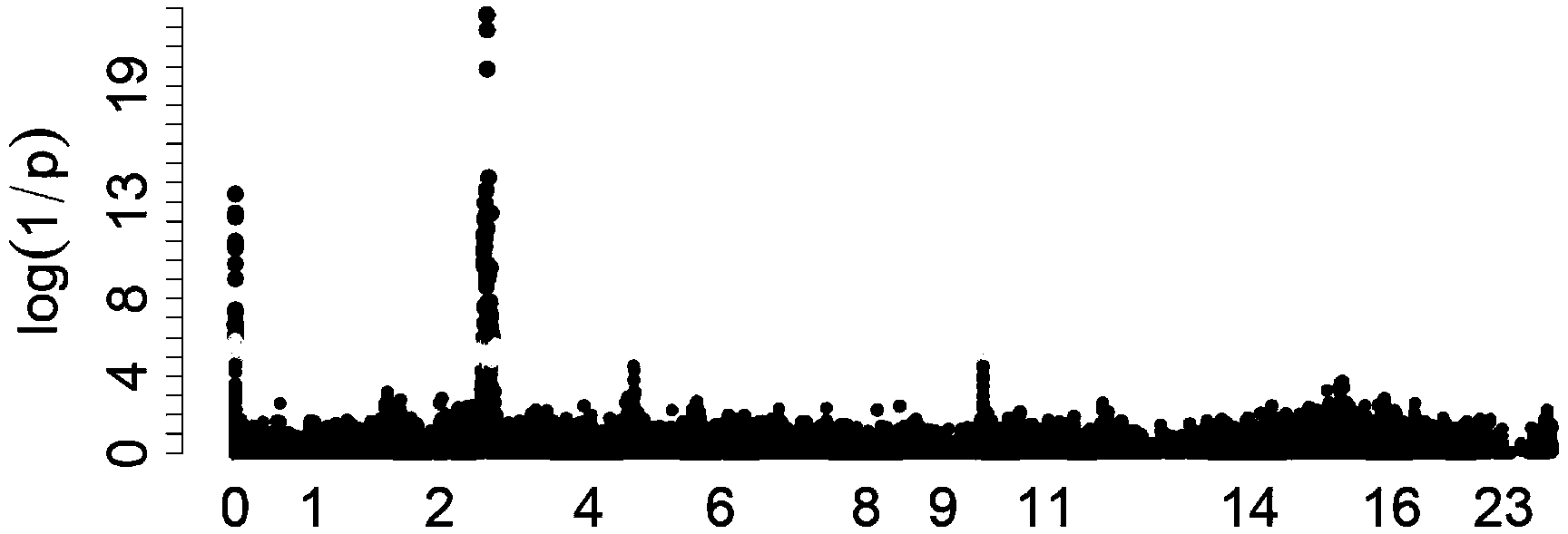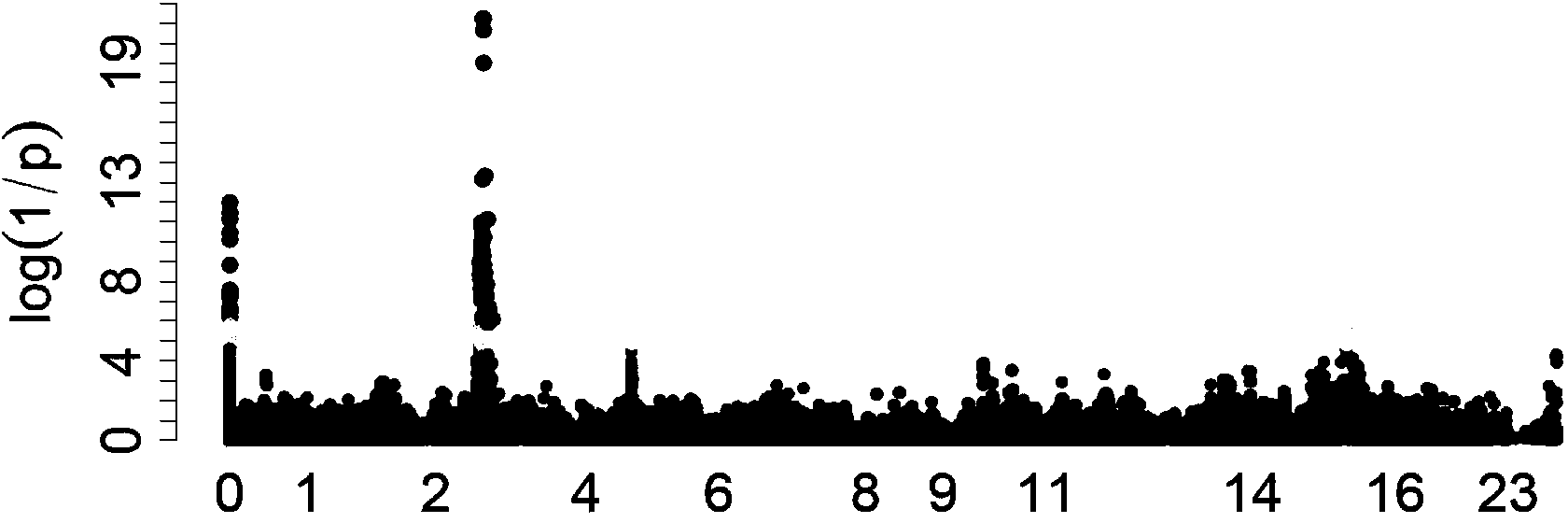PHKG1 (phosphorylase kinase, gamma 1) gene and application thereof in genetic improvement for breeding pig meat quality traits
A technology for meat quality traits and genetic improvement, applied in the field of molecular biology, can solve the problems of no polymorphism, low pH, and affecting GP
- Summary
- Abstract
- Description
- Claims
- Application Information
AI Technical Summary
Problems solved by technology
Method used
Image
Examples
Embodiment 1
[0126] Example 1: Mutation site g.17082117A>C to Sutai pig population and F 2 Analysis on the Effects of Meat Quality Traits of Pig Breeds in Resource Groups
[0127] Using China to breed pig breeds——Sutai pig group and white Duroc pig x Erhualian pig F 2 The resource groups are experimental animals. 408 Sutai pigs and 785 F 2 The resource groups were bred to 240 days old, sent to the slaughterhouse of Jiangxi Guohong Company for designated slaughtering, and the meat quality traits of each individual were measured respectively. The 435 Sutai pigs and 785 F pigs were digested with PCR products. 2 The genotype determination of the g.17082117A>C locus was performed on resource individuals. Then GenABEL software was used to analyze the effect of genotype on phenotype. The results show that in F 2 In the resource population, the g.17082117A>C locus had a very significant correlation with the GP phenotype (P<1.0×10-10, see Table 6): the average GP value of individuals with the...
Embodiment 2
[0133] Example 2: Analysis of the effect of the mutation site g.17082117A>C on the meat quality traits of Du Dachang commercial pig breed
[0134] The commercial colony of Du long-term hybridization was used as the experimental animal. 140 Du Changda commercial pigs were bred to 240 days old, sent to the slaughterhouse of Jiangxi Guohong Company for designated slaughtering, and the meat quality traits of each individual were measured respectively. The g.17082117A>C locus genotype determination was carried out on the 140 Du large commercial pig individuals by PCR product digestion. Then use the GenABEL software to analyze the effect of genotype on the remaining glycogen content at 45min, pH36h, and drip loss at 36h. The results showed that in Du Dachang commercial pigs, the g.17082117A>C site was significantly correlated with the 45min residual glycogen content, pH36h, and 36h drip loss phenotypes (P<0.05, see Table 7): AA genotype individual ratio The average remaining glyco...
Embodiment 3
[0137] Example 3: Linkage disequilibrium analysis
[0138] The applicant used the LDheatmap package in the R language to calculate the degree of linkage disequilibrium between different markers in the Sutai pig population (r 2 ). with r 2 ≥0.8 is the threshold value, and the haplotype box around the mutation site g.17082117A>C of PHKG1 is obtained (see Figure 11 ), which indicates that all molecular markers in the haplotype frame are linked to the g.17082117A>C site with a degree of r 2 reach above 0.8. At the same time, GWAS analysis confirmed that all the molecular markers in the haplotype frame are related to the glycogenolytic potential and muscle glycogen content above the genome significant level, and their degree of correlation with the phenotype depends on their causal relationship with the gene. The degree of close linkage of the mutation site g.17082117A>C. E.g, Figure 11 It shows that SNPALGA0123314 is highly linked to the g.17082117A>C site (r 2 =0.97), wh...
PUM
 Login to View More
Login to View More Abstract
Description
Claims
Application Information
 Login to View More
Login to View More - R&D
- Intellectual Property
- Life Sciences
- Materials
- Tech Scout
- Unparalleled Data Quality
- Higher Quality Content
- 60% Fewer Hallucinations
Browse by: Latest US Patents, China's latest patents, Technical Efficacy Thesaurus, Application Domain, Technology Topic, Popular Technical Reports.
© 2025 PatSnap. All rights reserved.Legal|Privacy policy|Modern Slavery Act Transparency Statement|Sitemap|About US| Contact US: help@patsnap.com



